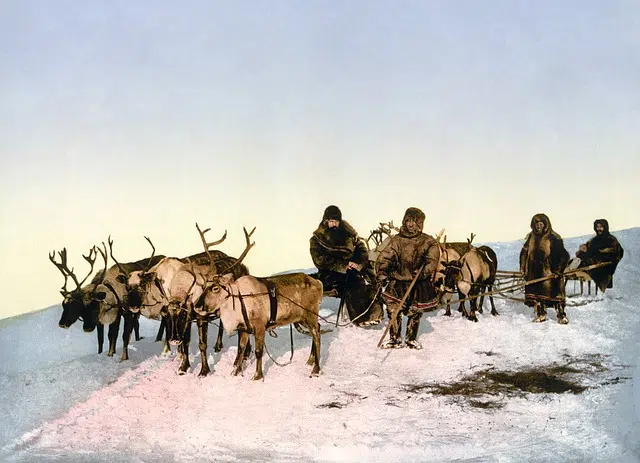
A nomadic people do not live in a fixed territory, but rather move from one place to another constantly.
From the Latin nomas , which in turn derives from a Greek word, the term nomad refers to someone who goes from one place to another without establishing a fixed residence . The concept is linked to the person who is constantly traveling or moving and is opposed to the notion of sedentary .
A nomadic people is one that does not live in a stable territory as a permanent residence. This way of life implies a very particular social, administrative and economic organization, which adapts to this way of living.
Characteristics of a nomadic people
Among the many and varied signs of identity that serve to determine that a culture or group is nomadic, we could highlight the following:
– Socially they are fundamentally structured into what would be clans and tribes.
– The patriarch is usually the highest authority. This is an old man who is respected by the rest of the group and who, due to his knowledge, is the one who determines where they are going to go and when they are going to start the outing.
– They stand out for extremely protecting the environment. That is because they basically subsist on it, on the food that it can provide them at all times.
– Oral tradition in this type of culture is fundamental. Hence, elements such as the story take center stage.

Many Eskimos continue to be nomads.
Adoption of a sedentary lifestyle
In ancient times, before the development of agriculture and livestock , all human beings were nomadic since they had to move to get food. Nomadism allowed extensive regions of the planet to be populated and contributed to adaptation to natural phenomena such as glaciation .
It is difficult to know the history of nomadic peoples since writing is a characteristic of sedentary societies. That is why many of the references of these traveling cultures come, in reality, from descriptions made by sedentary peoples. The best way to get to know a nomadic people from ancient times is through the traces interpreted by archaeology .
Nomadic cultures today
In addition to all of the above, it must be emphasized that currently the tribes and nomadic groups that exist throughout the world are experiencing a situation of threat of disappearing. This is due to different causes. However, among all of them we would highlight the following as the main ones:
– Development of armed conflicts that revolve around land ownership.
– Excessive and uncontrolled exploitation of natural resources.
– Non-peaceful imposition of a sedentary lifestyle using the achievement of development as an excuse.
Several populations are still nomadic today. The Arab Bedouins , the Greenland Eskimos , and the Tuaregs of the Sahara Desert , for example, are among these groups. Private ownership of land, the advance of industrialization and border control are some of the problems that exist for the subsistence of nomadic peoples.
In addition, we could also highlight other nomadic groups such as the Yanomami in Venezuela, the pygmies and Mbuti in Africa, the Mongols in Asia or the gypsies in Europe. A wide and varied number of nomadic cultures that would become part of the 40 million people who currently live under the protection of a non-sedentary lifestyle.
